The National Hockey League, like any long-standing institution, has seen its fair share of changes over the years.
One such evolution that has intrigued fans and historians alike is the NHL’s transition from white jerseys at home to the colorful spectacles we witness today.
This shift, spanning decades and influenced by a myriad of factors, tells a fascinating story about the league’s commitment to tradition, its adaptation to modernity, and the ever-important fan experience.
In this blog post, we’ll delve into the reasons why did the NHL switch from white jerseys at home to colors, tracing its origins in the 1950s to the 1970s reversal and the subsequent return to colorful home jerseys in 2003.
We’ll explore how technological advancements, marketing strategies, and the league’s image have all played pivotal roles in this transformation.
Join us on a journey through the NHL’s jersey color history, as we uncover the motivations and significance of this enduring change. Stay focused.
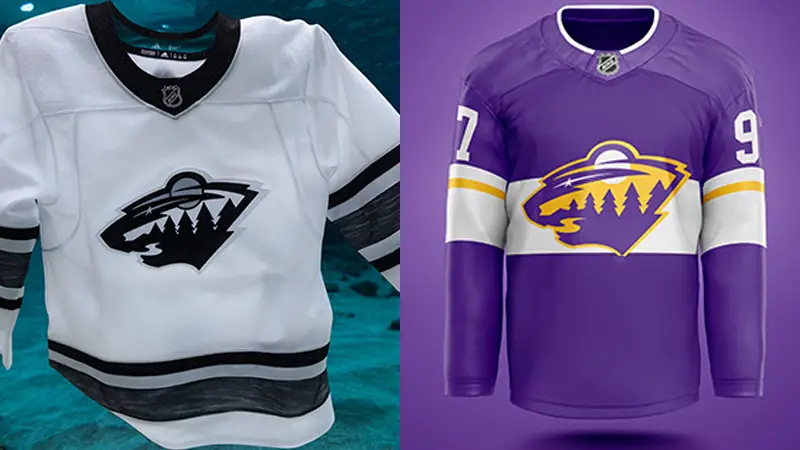
NHL Jersey Color
NHL jersey colors are a crucial element of a team’s identity in the National Hockey League. Each team’s jersey design and color scheme is carefully chosen to represent its city or region and to create a unique visual brand.
Traditionally, NHL teams have two primary jerseys: a home jersey and an away jersey. Home jerseys often feature the team’s primary color, while away jerseys typically incorporate a contrasting color scheme.
These jerseys display the team’s logo on the front, player numbers on the back, and sometimes additional logos or patches to commemorate special events or achievements.
In recent years, the NHL has introduced alternate and heritage jerseys, providing teams with additional options to showcase their history and creativity. These alternate jerseys often feature unique color combinations and designs that pay tribute to the team’s past or cultural significance.
NHL jersey colors play a vital role in fan engagement and team recognition, making them an integral part of the league’s visual identity.
Why Did the NHL Switch From White Jerseys at Home to Colors?
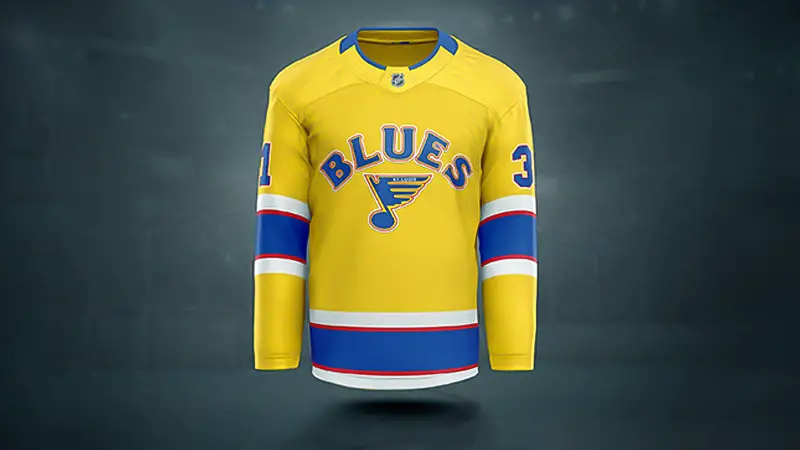
The NHL’s switch from white jerseys at home to colors, and then back to white, is a fascinating evolution in the league’s uniform regulations. Several factors contributed to these changes:
Black-and-White Television Era (the 1950s)
In the 1950s, when black-and-white television was prevalent, the NHL introduced the rule of having the home team wear colored jerseys. This decision was made to enhance visibility for television viewers.
Colored jerseys helped differentiate the teams on monochrome screens, making it easier for fans to follow the action.
Technological Advancements
As technology improved and color television became more widespread, the need for colored jerseys to enhance visibility diminished.
By the late 1960s, color television had become the norm, reducing the necessity for contrasting jersey colors.
1970 Rule Change
In 1970, the NHL decided to switch back to white jerseys for home teams. One of the primary reasons for this change was to allow the home team fans to see their team’s colored jerseys more often.
It was believed that fans preferred seeing their team in their distinctive colors when attending games.
Tradition and Fan Preference
The 1970 rule change also aimed to restore the tradition of the home team wearing white. This tradition dates back to the early days of organized hockey and was seen as part of the sport’s heritage.
Fan preference was a significant factor in this decision, as many fans associated their team with their home colors.
Color Uniform Trends
In the years that followed, colored uniforms became more prominent in the NHL as teams introduced more vibrant and distinctive designs.
This trend reinforced the idea that the home team should wear white, as it allowed visiting teams to showcase their colorful jerseys, adding excitement and variety to the viewing experience.
2003 Reversal
In 2003, the NHL reversed its stance once again, allowing home teams to choose whether they wanted to wear white or colored jerseys.
This change was part of the NHL’s effort to revamp its image and add more variety to its uniform options.
It also accommodated the preferences of some teams and fans who had grown accustomed to seeing the home team in colored jerseys.
The NHL’s switch from white jerseys to colored jerseys at home, and then back to white, was influenced by technological advancements, fan preferences, and a desire to maintain tradition while adapting to changing times.
Origins of NHL’s White Jerseys at Home
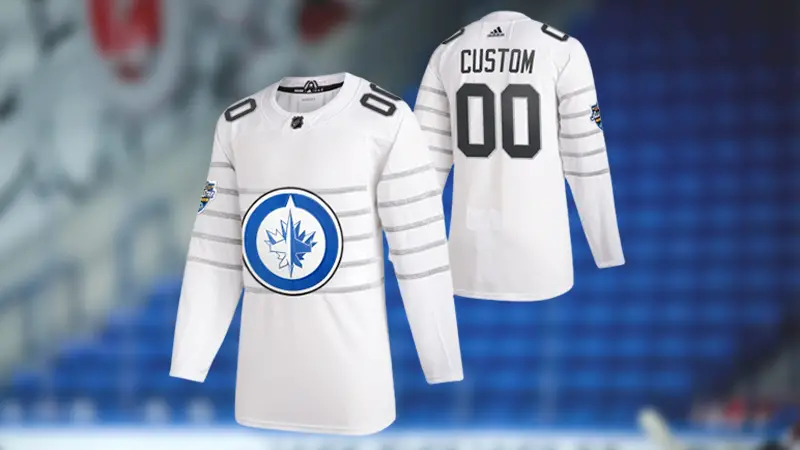
The origins of NHL teams wearing white jerseys at home can be traced back to the early days of organized ice hockey. Several factors contributed to this tradition:
Early Uniforms
In the early years of ice hockey, teams often had limited resources and variations in uniform colors. Many teams simply had one set of jerseys, which were often white or lighter in color.
This made it practical for teams to wear white jerseys at home, as they were more readily available and showed less wear and tear on the ice.
Visibility
In the early 20th century, indoor ice rinks were not as well-lit as modern arenas.
White jerseys stood out more prominently under the available lighting conditions, making it easier for players and spectators to track the action on the ice.
Dark-colored jerseys, on the other hand, could be harder to see.
Travel Considerations
In the early years of the NHL, teams often traveled by train, and the logistics of carrying multiple sets of jerseys for home and away games could be challenging.
White jerseys were less likely to show dirt and stains during travel, making them a practical choice for home games.
Home Advantage
The tradition of wearing white at home also had the advantage of allowing the home team to choose its jersey color.
This meant that visiting teams had to adapt to the home team’s color scheme, potentially creating a psychological advantage for the home team.
Historical Continuity
As hockey traditions were established, the practice of wearing white at home became ingrained in the sport’s culture. It was seen as part of the heritage of ice hockey, and teams and fans embraced the tradition.
Fan Association
Over time, fans came to associate their favorite teams with their white home jerseys. These jerseys became iconic symbols of the team’s identity and were eagerly awaited by fans attending home games.
It’s important to note that the NHL’s tradition of wearing white at home continued for decades but was not an official league rule until it was briefly changed in 1970.
The tradition was eventually reversed in 2003 when the NHL allowed teams to choose whether to wear white or colored jerseys at home.
Factors Influencing the Change of NHL’s Jersey Color
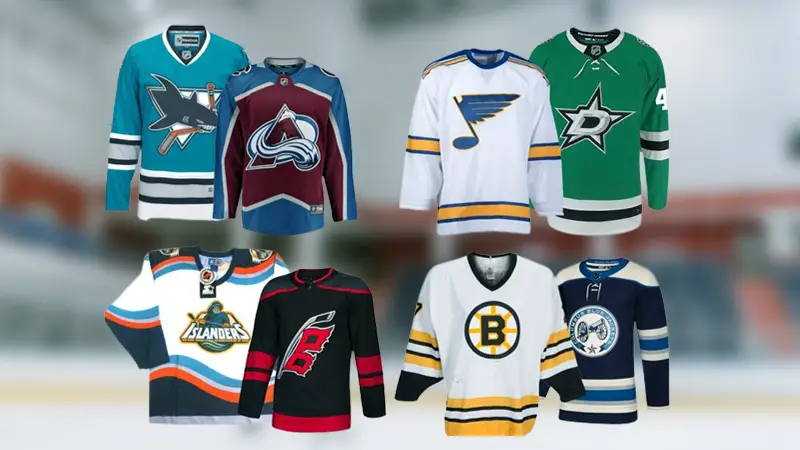
The NHL’s decision to change its jersey color regulations over the years has been influenced by several key factors:
Technological Advancements
The shift from white jerseys to colored jerseys at home in the 1950s was largely influenced by the prevalence of black-and-white television.
Colored jerseys helped viewers distinguish between teams on monochrome screens. However, as color television became widespread, the need for colored jerseys diminished.
Fan Preferences
The NHL has often considered the preferences of its fan base when making jersey color decisions.
The switch back to white jerseys for home teams in 1970 was influenced by the desire to cater to fans who wanted to see their teams in their distinctive colors more often.
Tradition and Heritage
The 1970 change back to white jerseys was also motivated by a desire to maintain or restore the tradition and heritage of the sport.
Many fans and players associated white jerseys at home with the roots of ice hockey, and this change aimed to preserve that tradition.
Uniform Design Trends
Over the years, the NHL has witnessed trends in uniform design. Teams began to introduce more colorful and distinctive jerseys, making the league more visually appealing.
Allowing home teams to wear white jerseys in the 1970s allowed visiting teams to showcase their colorful uniforms, adding variety to the games.
League Image and Branding
The NHL has occasionally adjusted its jersey regulations to enhance its image and branding.
The 2003 decision to allow home teams to choose between white and colored jerseys was part of a broader effort to modernize the league’s image and provide teams with greater flexibility in their uniform choices.
Marketing and Merchandising
Changes in jersey color regulations have also been influenced by marketing and merchandising considerations.
Teams often introduce alternate and heritage jerseys with unique color schemes to boost jersey sales and merchandise revenue.
Fan Engagement and Entertainment
The NHL aims to provide an engaging and entertaining experience for fans. Altering jersey color regulations can add variety to the visual aspect of the game, keeping fans interested and excited.
League-Wide Consistency
Maintaining consistency in jersey color regulations across the league is essential to avoid confusion among fans and players.
Changes are made with the aim of ensuring that the game remains easy to follow and visually coherent.
Significances of NHL’s Colorful Jersey
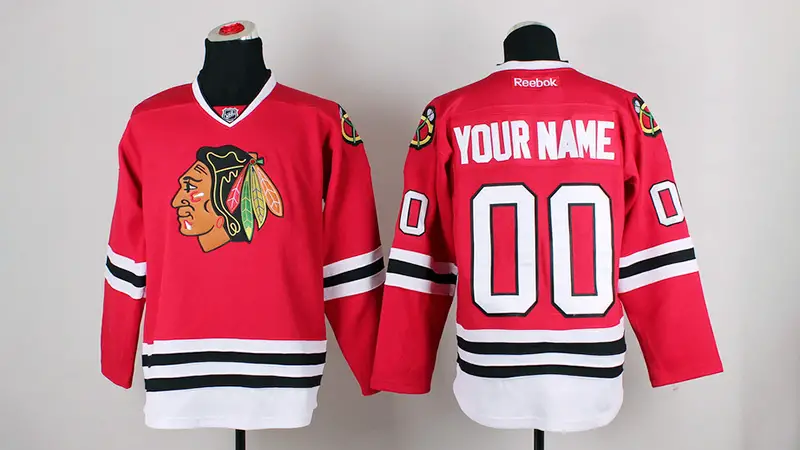
The introduction and significance of colorful jerseys in the NHL have had several important impacts on the league and the sport of ice hockey:
Increased Visual Appeal
Colorful jerseys have enhanced the visual appeal of NHL games. They make games more exciting and visually dynamic for fans, both in the arena and on television.
The vibrant colors and unique designs have become a defining feature of the NHL’s aesthetics.
Fan Engagement
Colorful jerseys have a profound effect on fan engagement. Fans often identify strongly with their team’s colors and logos.
Colorful jerseys create a sense of pride and community among fans, fostering a deeper connection to their teams.
Merchandising Opportunities
The introduction of colorful jerseys has provided teams with additional merchandising opportunities.
Fans are eager to purchase jerseys and other merchandise featuring their team’s colors and logos, leading to increased revenue for teams and the league.
Marketing and Branding
Colorful jerseys are a crucial component of a team’s branding strategy. Teams carefully design their jerseys to reflect their identity, history, and regional significance.
These jerseys serve as powerful marketing tools that help establish a team’s brand and identity.
Recognition and Identity
Colorful jerseys play a significant role in helping fans and viewers identify teams quickly.
Each team’s unique color scheme and design make it easier to distinguish between teams during games, contributing to a better overall viewing experience.
Variety and Tradition
While tradition has its place in the NHL, colorful jerseys have added variety to the league.
The introduction of alternate and heritage jerseys allows teams to pay homage to their history and experiment with different colors and designs, keeping the uniform aspect of the sport fresh and exciting.
Player Personality
Colorful jerseys often allow players to express their personalities and style on the ice. Players may customize elements of their uniforms, such as the laces or sock patterns, within league guidelines.
This individuality can make players more identifiable and relatable to fans.
Special Events and Themes
The NHL frequently uses colorful jerseys for special events, such as outdoor games, All-Star games, and themed nights.
These jerseys add an element of spectacle to these events and generate excitement among fans.
Community Engagement
Teams often involve the community in the design process of special jerseys. These jerseys may feature local cultural elements or pay tribute to specific causes or events, fostering a sense of community and engagement.
So, colorful jerseys have become a cornerstone of the NHL’s identity and fan experience.
FAQs
Why did the NHL switch from white jerseys at home to colors in the 1950s?
The switch aimed to enhance visibility on black-and-white TV, helping viewers differentiate teams. Colored jerseys were easier to distinguish, making the game more accessible to fans watching on monochrome screens.
What led to the NHL’s decision to revert to white jerseys at home in 1970?
The change was influenced by fan preferences and the desire to maintain tradition. Fans wanted to see their teams in their distinctive colors more often, and the move aimed to honor the heritage of ice hockey.
Why did the NHL go back to allowing teams to wear colors at home in 2003?
The shift accommodated the league’s desire for modernization and offered teams greater flexibility in uniform choices. It allowed for more variety in jersey designs and catered to teams and fans who favored colorful home jerseys.
Did the NHL’s jersey color changes impact the fan experience?
Yes, these changes influenced the fan experience significantly.
They affected how fans identified with their teams, added visual excitement to games and contributed to merchandising opportunities, all of which enhanced fan engagement.
How have technological advancements influenced the NHL’s jersey color decisions?
Technological advancements, especially the transition to color television, played a pivotal role in the changes.
As color TV became standard, the necessity for white home jerseys decreased, ultimately impacting the NHL’s uniform regulations.
Wrapping Up
In the ever-evolving landscape of professional sports, the NHL’s transition from white to colorful jerseys at home remains a captivating chapter in the league’s storied history.
From the black-and-white television era to the era of high-definition screens, this shift symbolizes not only the NHL’s commitment to tradition but also its responsiveness to the changing demands of fans and the evolution of technology.
The significance of colorful jerseys extends beyond aesthetics, impacting fan engagement, marketing, merchandising, and the overall identity of each team.
As the NHL continues to thrive, the colorful jerseys worn by its teams are more than just uniforms; they are the embodiment of the league’s enduring spirit and connection with its devoted fan base.
Thank you for being with us.







Benjamin Kenyon